 Bee pollen is a holistic remedy used throughout the world. Unfortunately the vast amount of uses that pollen can be used for are often overlooked.
Dr. Gabriel Cousens MD, has listed bee pollen as one of his 22 most recommended food energies.
Bee Pollen is made by honeybees, it is loaded with antioxidants and is nature's most complete nourishing foods.
Pollen contains nearly all nutrients required by humans, free amino acids, rutin, vitamins, including B-complex, and folic acid and is rich in protein. Bee Pollen can be used medicinally for a wide range of conditions from prostate health to skin conditions and can help correct specific nutritional imbalances within the body.
Here are just 10 great reasons to add fresh bee pollen to your daily diet… although there are many more! :
1. Energy Enhancer - The range of nutrients found within bee pollen makes it a great natural energizer. The carbohydrates, protein and B vitamins can help keep you going all day by enhancing stamina and fighting off fatigue.
2. Skin Soother - Bee pollen is often used in topical products that aim to treat inflammatory conditions and common skin irritations like psoriasis or eczema. The amino acids and vitamins protect the skin and aid the regeneration of cells.
3. Respiratory System - Bee pollen contains a high quantity of antioxidants that may have an anti-inflammatory effect on the tissues of the lungs, preventing the onset of asthma.
4. Treating Allergies – Pollen reduces the presence of histamine, ameliorating many allergies. Dr. Leo Conway, M.D of Denver Colorado, reported that 94 percent of his patients were completely free from allergy symptoms once treated with oral feeding of pollen. Everything from asthma to allergies to sinus problems were cleared, confirming that bee pollen is wonderfully effective against a wide range of respiratory diseases.
5. Digestive System - In addition to healthful vitamins, minerals and protein, bee pollen contains enzymes that can aid in digestion. Enzymes assist your body in getting all the nutrients you need from the food that you eat.
6. Immune System Booster - Pollen is good for the intestinal flora and thereby supports the immune system. According to holistic health expert Dr. Joseph Mercola, bee pollen has antibiotic-type properties that can help protect the body from contracting viruses. It's also rich in antioxidants that protect the cells from the damaging oxidation of free radicals.
7. Treats Addictions – Used holistically for healing addictions and inhibiting cravings by suppressing impulses. Because bee pollen crashes cravings, it is a very useful research is needed into this benefit, particularly when it comes to weight management.
8. Supports the Cardiovascular System - Bee Pollen contains large amounts of Rutin; an antioxidant bioflavonoid that helps strengthen capillaries, blood vessels, assists with circulatory problems and corrects cholesterol levels. Its potent anticlotting powers could help prevent heart attack and stroke.
9. Prostate Aid - Men who suffer from benign prostate hyperplasia can find relief by using bee pollen. Bee pollen can help reduce inflammation to stop frequent urges to urinate.
10. Infertility Problems - Bee pollen stimulates and restores ovarian function, therefore may be used to assist in accelerating pregnancy. As well as being a hormonal booster it is also a great aphrodisiac!
How should pollen be consumed?
Bee pollen is a food and acts faster and more effectively when taken at mealtime and especially with fruit, which let it gently, perform a little cleansing of the intestinal flora.
A spoonful at breakfast, preferably taken with a piece of fruit: the fruit fibers (raw hemicellulose) reinforce the activity of the fresh pollen.
*You'lll be pleased to know that bee keepers are able to remove pollen from hives without harming the bees or disturbing their routine.
Read More:
>> Looking For An Effective Skin Beauty Product?
Ah, Graduation — free at last! It was a fantastic experience; the thought that the days of essays, difficult assignments and exams had finally ended. Yeah, finishing a college degree is an accomplishment worth celebrating! | However, the ecstasy was just short-lived.
Frustrations slowly set in when unemployment issue shoved into the faces of our new college graduates. Evidence is slowly showing that the harm caused by the weak economy is immense. Unemployment has remained high in the Philippines, at almost twice the level of neighboring
countries.
What’s more, almost 50% of the occupations
landed by the new professionals do not suit to their skills. A registered nurse becomes a bar tender. A civil engineer works on a department store. A teacher mans a ticket booth. While this squanders
their professions, it also displaces the less-educated workers who would normally occupy the position. Others would be forced to work abroad or in a company that pay less or have less room for growth. | Some will begin to regret spending too much for a career, which only yields little returns. What about the money that their parents spent in order to afford their way to their career? How are they going to pay this off? And more and more questions will run
through their minds. They feel increasingly desperate the longer their job search drags on. The newly-graduates feel helpless and are left with limited options. Their future seems to look bleak.
But it shouldn’t mean that they leave all these things to fate and do nothing. As Mary Kay Ash once said: “For every failure, there’s an alternative course of action. You just have to find it. When you
come to a roadblock, take a detour.”
By preference, these young professionals
can stop seeking for a job and be the boss
by starting a business of their own. | Finding it hard to get a job? Why not start your own business instead of working of someone else? | | When you start your own business you will have the satisfaction of being your own boss.
And this will also ease you from worrying about finding a job; you’ll already have one. Almost everyone aspires to own a business; with huge hopes and dreams. But the fact is it is really hard to find a business opportunity with a small initial investment that generates high return and high earning potential. EARN MONEY WHILE DRINKING DXN COFFEE! Yes, the DXN MLM business is for you who have the desire to earn the kind of income
that will give you the life that you deserve.
>> Enjoy true financial freedom
>> Spend more time with your family
>> Opportunity to travel around the world
>> Be your own boss and choose your own hours
>> Success in sharing and helping others | | | DXN MLM business is about achieving long-term financial security. With unemployment numbers extremely high nowadays, many people are turning to MLM to make an extra income.
However, you should be careful to work with only dependable MLM companies. There are a lot of companies out there that promise you big income but can’t deliver the goods.
That is why DXN is so special. DXN’s credentials can be seen in its track record.
DXN business doesn’t discriminate based on educational attainment, age, gender, nationality, physical attributes, even experience and appearance. This business has a fair shake at true financial success for everyone.
| |
| If the pancreas's beta cells are damaged or destroyed, then yes, diabetes can occur. It wouldn't quite be the same as Type 1, which is an autoimmune attack onto the pancreas, but the pancreas would become insulin deficient, much like it would for a Type 1. The person certainly wouldn't be a Type 2, which is characterized as insulin resistance.
Beta cells have been known to regrow, but once the damage is done, it's probably done. A pancreatic transplant might work for a person who has diabetes from a damaged pancreas rather than an autoimmune disorder.
| | 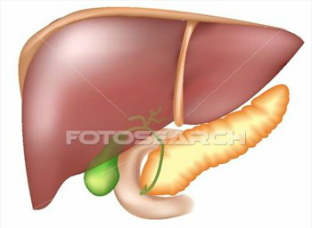 Pancreatic cancer is very dangerous since it rarely detected in its early stages and often comes with a very poor prognosis. Adding to the danger of this disease is the fact that pancreatic cancer tends to spread rapidly and the signs and symptoms aren’t always apparent until it’s too late.
TypesThere are two main types of pancreatic cancer, each of which is categorized by which cells the cancer originally forms in:
- Cancer formed in the pancreas ducts: The pancreas ducts are responsible for producing juices which help with digestion. When cancer first forms in the cells located in the ducts of the pancreas, this type of pancreatic cancer occurs. This type of cancer is also referred to as adenocarcinoma and accounts for most of the cases of pancreatic cancer.
- Cancer formed in the hormone-producing cells: When cancer first forms in the cells of the pancreas responsible for producing hormones, this type of cancer occurs. This type of cancer is also referred to as endocrine cancer and is much rarer than cancer which is formed in the pancreas ducts.
SymptomsOne of the most dangerous things about pancreatic cancer is that tumors in the pancreas can often grow for some time without any symptoms. However, there are a few indicators that pancreatic cancer may be developing, including:
- Dark-colored urine
- Clay-colored stools
- Nausea
- Vomiting
- Loss of appetite
- Unintentional weight loss
- Jaundice (skin or eyes that become yellowish in color)
- Pain or discomfort in the upper abdomen
- Diarrhea
- Indigestion
- Back pain
- Blood clots
- Depression
These symptoms may be indicators of any number of diseases besides pancreatic cancer, so it’s important to see a doctor if you find that you are experiencing any of these symptoms.
Causes And Risk FactorsPancreatic cancer is caused by a genetic mutation in the cells of the pancreas. The mutations allow the cells to divide and grow at unusually rapid rates. In addition, the mutations also allow the cells to stay alive under conditions where normal cells would die. Often, the accumulating cells will turn into a mass that forms a tumor.
There are several factors which can increase a person’s risk for pancreatic cancer, including:
- Age: The older an individual is, the higher their risk for pancreatic cancer is. This is particularly true once a person surpasses the age of 60.
- Sex: Pancreatic cancer is slightly more common in women compared to men.
- Race: African-Americans are more likely to get pancreatic cancer than people of other races.
- Family history: Having a personal or family history of pancreatic cancer increases your risk for the disease. In addition, having a family history of certain genetic syndromes – including a BRCA2 gene mutation, Lynch syndrome and Peutz-Jeghers syndrome – increases a person’s risk for pancreatic cancer.
- Smoking: Smokers are more likely to get pancreatic cancer than non-smokers.
- Having certain health conditions: People with pancreatitis (chronic inflammation of the pancreas) or diabetes and those who are overweight or obese have a higher risk for pancreatic cancer.
PreventionThere are no proven ways to prevent pancreatic cancer completely, but many people can reduce their risk for the disease by taking the following steps:
- Quitting smoking
- Maintaining a healthy weight
- Eating a diet with lots of fruits, vegetables and whole grains
- Exercising regularly
TreatmentSadly, pancreatic cancer is one of the most deadly types of cancer. According to the U.S. National Library of Medicine, about 95 percent of people diagnosed with pancreatic cancer will not be alive 5 years later. Additionally, those whose pancreatic cancer cannot be removed or that has spread to other parts of the body are generally given one year or less to live. Because of the poor prognosis of the disease, some people do not undergo intensive treatment once they are diagnosed. However, some types of pancreatic cancer may be treatable, and for those types of cancer the following treatments are often used:
- Surgery: When possible, doctors will try to remove as much of the cancer from the pancreas as possible. One common method for this is the Whipple procedure, which involves removing the head of the pancreas, a portion of the small intestine, the gallbladder and part of the bile duct. A distal pancreatectomy involves removing the tail of the pancreas. In either case, surgery always has a risk of bleeding or infection.
- Radiation therapy: With radiation therapy, high-energy beams are used to kill the cancer cells in the pancreas and other areas to which it has spread.
- Chemotherapy: Chemotherapy is the use of drugs to kill off cancer cells. The drugs are administered orally or intravenously.
- Clinical trials: Because pancreatic cancer is often accompanied by a poor prognosis, many people join clinical trials to explore new ways to treat their disease. This may involve taking a drug or even getting a experimental pancreatic cancer vaccine.
 Kidney stones (renal lithiasis) are small, hard deposits that form inside your kidneys. The stones are made of mineral and acid salts. Kidney stones have many causes and can affect any part of your urinary tract — from your kidneys to your bladder. Often, stones form when the urine becomes concentrated, allowing minerals to crystallize and stick together.
 Passing kidney stones can be quite painful, but the stones usually cause no permanent damage.
Depending on your situation, you may need nothing more than to take pain medication and drink lots of water to pass a kidney stone. In other instances, surgery may be needed. Your doctor may recommend preventive treatment to reduce your risk of recurrent kidney stones if you're at increased risk of developing them again.
A kidney stone may not cause symptoms until it moves around within your kidney or passes into your ureter — the tube connecting the kidney and bladder.
 Signs and Symptoms:
Severe pain in the side and back, below the ribs
Pain that spreads to the lower abdomen and groin
Pain that comes in waves and fluctuates in intensity
Pain on urination
Pink, red or brown urine
Cloudy or foul-smelling urine
Nausea and vomiting
Persistent urge to urinate
Urinating more often than usual
Fever and chills if an infection is present
Pain caused by a kidney stone may change — for instance, shifting to a different location or increasing in intensity — as the stone moves through your urinary tract.
Seek immediate medical attention if you experience:
Pain so severe that you can't sit still or find a comfortable position
Pain accompanied by nausea and vomiting
Pain accompanied by fever and chills
Blood in your urine
Difficulty passing urine
Causes of Kidney Stones
Kidney stones often have no definite, single cause, although several factors may increase your risk.
Kidney stones form when your urine contains more crystal-forming substances — such as calcium, oxalate and uric acid — than the fluid in your urine can dilute. At the same time, your urine may lack substances that keep crystals from sticking together, creating an ideal environment for kidney stones to form.
Types of kidney stones
Knowing the type of kidney stone helps determine the cause and may give clues on how to reduce your risk of getting more kidney stones.
Types of kidney stones include:
1. Calcium stones. Most kidney stones are calcium stones, usually in the form of calcium oxalate. Oxalate is a naturally occurring substance found in food. Some fruits and vegetables, as well as nuts and chocolate, have high oxalate levels. Your liver also produces oxalate. Dietary factors, high doses of vitamin D, intestinal bypass surgery and several metabolic disorders can increase the concentration of calcium or oxalate in urine. Calcium stones may also occur in the form of calcium phosphate.
2. Struvite stones. Struvite stones form in response to an infection, such as a urinary tract infection. These stones can grow quickly and become quite large, sometimes with few symptoms or little warning.
3. Uric acid stones. Uric acid stones can form in people who don't drink enough fluids or who lose too much fluid, those who eat a high-protein diet, and those who have gout. Certain genetic factors also may increase your risk of uric acid stones.
4. Cystine stones. These stones form in people with a hereditary disorder that causes the kidneys to excrete too much of certain amino acids (cystinuria).
5. Other stones. Other, rarer types of kidney stones can occur.
Risk factors. Factors that increase your risk of developing kidney stones include:
* Family or personal history. If someone in your family has kidney stones, you're more likely to develop stones, too. And if you've already had one or more kidney stones, you're at increased risk of developing another.
* Being an adult. Kidney stones are most common in adults age 40 and older, though kidney stones may occur at any age.
* Being a man. Men are more likely to develop kidney stones, although an increasing number of women are developing kidney stones.
* Dehydration. Not drinking enough water each day can increase your risk of kidney stones. People who live in warm climates and those who sweat a lot may be at higher risk than others.
* Certain diets. Eating a diet that's high in protein, sodium and sugar may increase your risk of some types of kidney stones. This is especially true with a high-sodium diet. Too much sodium in your diet increases the amount of calcium your kidneys must filter and significantly increases your risk of kidney stones.
* Being obese. High body mass index (BMI), large waist size and weight gain have been linked to an increased risk of kidney stones.
* Digestive diseases and surgery. Gastric bypass surgery, inflammatory bowel disease or chronic diarrhea can cause changes in the digestive process that affect your absorption of calcium and water, increasing the levels of stone-forming substances in your urine.
* Other medical conditions. Diseases and conditions that may increase your risk of kidney stones include renal tubular acidosis, cystinuria, hyperparathyroidism, certain medications and some urinary tract infections.
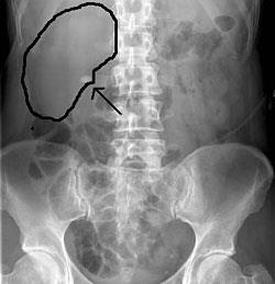 Tests and diagnosis
If your doctor suspects you have a kidney stone, you may have diagnostic tests and procedures, such as:
* Blood tests. Blood tests may reveal too much calcium or uric acid in your blood. Blood test results help monitor the health of your kidneys and may lead your doctor to check for other medical conditions.
* Urine tests. Tests of your urine, such as the 24-hour urine collection, may show that you're excreting too many stone-forming minerals or too few stone-preventing substances.
* Imaging tests. Imaging tests may show kidney stones in your urinary tract. Options range from simple abdominal X-rays, which can miss small kidney stones, to high-speed computerized tomography (CT) that may reveal even tiny stones. Other imaging options include an ultrasound, a noninvasive test, and intravenous pyelography, which involves injecting dye into your arm vein and taking X-rays as the dye travels through your kidneys and bladder.
* Analysis of passed stones. You may be asked to urinate through a strainer to catch stones that you pass. Lab analysis will reveal the makeup of your kidney stones. Your doctor uses this information to determine what's causing your kidney stones and treatments.
Small stones with minimal symptoms
Most kidney stones won't require invasive treatment. You may be able to pass a small stone by:
Drinking water. Drinking as much as 2 to 3 quarts (1.9 to 2.8 liters) a day may help flush out your urinary system. Unless your doctor tells you otherwise, drink enough fluid — mostly water — to produce clear or nearly clear urine.
Pain relievers. Passing a small stone can cause some discomfort. To relieve mild pain, your doctor may recommend pain relievers.
Medical therapy. Your doctor may give you a medication to help pass your kidney stone. This type of medication, known as an alpha blocker, relaxes the muscles in your ureter, helping you pass the kidney stone more quickly and with less pain.
 Large stones and those that cause symptoms
Kidney stones that can't be treated with conservative measures — either because they're too large to pass on their own or because they cause bleeding, kidney damage or ongoing urinary tract infections — may require more invasive treatment. Procedures may include:
Using sound waves to break up stones. For certain kidney stones — depending on size and location — your doctor may recommend a procedure called extracorporeal shock wave lithotripsy (SWL). SWL uses sound waves to create strong vibrations (shock waves) that break the stones into tiny pieces that can be passed in your urine. The procedure lasts about 45 to 60 minutes and can cause moderate pain, so you may be under sedation or light anesthesia to make you comfortable. SWL can cause blood in the urine, bruising on the back or abdomen, bleeding around the kidney and other adjacent organs, and discomfort as the stone fragments pass through the urinary tract.
 Surgery to remove very large stones in the kidney. A procedure called percutaneous nephrolithotomy(nef-row-lih-THOT-uh-me) involves surgically removing a kidney stone using small telescopes and instruments inserted through a small incision in your back. You'll receive general anesthesia during the surgery and be in the hospital for one to two days while you recover. Your doctor may recommend this surgery if SWL was unsuccessful or if your stone is very large.
 Using a scope to remove stones. To remove a smaller stone in your ureter or kidney, your doctor may pass a thin lighted tube (ureteroscope) equipped with a camera through your urethra and bladder to your ureter. Once the stone is located, special tools can snare the stone or break it into pieces that will pass in your urine. Your doctor may then place a small tube (stent) in the ureter to relieve swelling and promote healing. You may need general or local anesthesia during this procedure.
Parathyroid gland surgery. Some calcium stones are caused by overactive parathyroid glands, which are located on the four corners of your thyroid gland, just below your Adam's apple. When these glands produce too much parathyroid hormone (hyperparathyroidism), your calcium levels can become too high and kidney stones may form as a result. Hyperparathyroidism sometimes occurs when a small, benign tumor forms in one of your parathyroid glands or you develop another condition that leads these glands to produce more parathyroid hormone. Removing the growth from the gland stops the formation of kidney stones. Or your doctor may recommend treatment of the condition that's causing your parathyroid gland to overproduce the hormone.
LATEST STUDIES:
Additional Health Tips: Home Remedies for Kidney Stones.
1. Drink eight glasses of water every day. Actually, the scientific evidence indicates that the benefits of drinking water kick in at about five glasses a day, but if you have kidney stones and you are not currently having an attack, it's always best to drink as much water as you can.
2. Drink DXN RG & GL, DXN Spirulina, DXN Lingzhi Coffee, DXN Spica Tea, Cordypine. The Harvard School of Public health has found that drinking 1 cup (240 ml) of regular or decaf coffee every day reduces the risk of kidney stones by 10%. Drinking a beer a day (more precisely, drinking 240 ml of beer a day, which is less than the average can of beer) reduces the risk of kidney stones by 21%. And drinking a glass of wine a day reduces the risk of kidney stones by 39%. Drinking more coffee, beer, or wine, however, is of no additional benefit.
3. Don't drink juice (except lemon juice). In the same study, the Harvard School of Public Health found that drinking a cup of apple juice every day increases the risk of kidney stones by 75%, and drinking a cup or orange juice or grapefruit juice every day increases the risk of stones by 85%. Cranberry extract also raises the risk of stones, although unsweetened juice reduces it. The negative effects of fruit juices are worse when juice is the only fluid consumed at a meal.
4. Drink milk. Most kidney stones contain calcium, so it would make logical sense that consuming less calcium would lower the risk of stones. Actually, the exact opposite happens. At least in men, a low-calcium diet nearly doubles the risk of stones. Taking calcium supplements, in women, lowers the risk of stones.
5. Don't avoid veggies.
6. Avoid eating too much meat. Only about one-third of people who get kidney stones suffer negative effects of a high-protein diet. For the kidney stone sufferers, however, a meat-free diet can be very helpful.
7. Consider taking a potassium-magnesium citrate supplement. One three-year study found taking potassium-magnesium citrate reduces the frequency of kidney stone attacks by a whopping 80%. It is essential, however, to make sure you do not have other kinds of kidney damage before taking any potassium supplement, since impaired kidneys have difficult excreting excessive potassium. People who take ACE inhibitors or ACE receptor blockers for high blood pressure should also avoid this supplement.
8. If you get brown or black kidney stones, consider taking inositol nicotinate, which is derived from rice bran. Just be sure to take no more than the dosage recommended on the label. Taking too much inositol nicotinate can result in itching, flushing, dizziness, and palpitations.
9. Drink mineral water. Mineral water reduces concentrations of calcium and uric acid, making the urine less alkaline and less likely to form stones. Our recommendations: Besides practicing the wellness tips above, include some health supplements into your daily diet works best to promote a healthy respiratory system. A good combination of the products listed below exerts synergistic effect in maintaining a strong respiratory system:
RG, GL, CORDYCEPS & CORDYPINE
Use GANODERMA LUCIDUM
 The major function of the human reproductive system is to produce offspring, ensure survival of the species and passing on hereditary traits from one generation to the next. The human reproductive system has four main functions: To produce egg cells (female) and sperm cells (male); to transport and sustain these cells; to nurture the developing offspring and to produce hormones.
The male reproductive system consists of a pair of testes and a network of excretory ducts, seminal vesicles, the prostate and the penis. The organs of the female reproductive system produce and sustain the female ovum, transport these cells to a site where the sperm fertilizes and provides a suitable environment for the developing fetus and produces the female sex hormones. The female reproductive system also includes the ovaries, fallopian tubes, uterus, vagina, accessory glands, and external genital organs.
Disorder of the Reproductive System
There are wide number of reproductive system disorders. A few examples are as follows:
> Endometriosis
Endometriosis is a disorder of the female reproductive system. In endometriosis, the endometrium, which normally lines the uterus, grows in other places such as fallopian tubes, ovaries or the tissue lining the pelvis. This tissue thickens, breaks down and bleeds each month. Because there is nowhere for the blood from this displaced tissue to exit body, it becomes trapped and irritate the surrounding tissues.
> Ovarian Cysts
Ovarian cysts are non cancerous sacs filled with fluid or semi-solid material in the ovary. Although they are common and generally harmless, they can become a problem if they grow very large. Large cysts tend to push on surrounding organs and may lead to abdominal pain. In most cases, cysts will disappear on their own and treatment is unnecessary.
> Impotence
Impotence is a disorder of male reproductive system. When a man cannot get an erection to have sex or unable to keep an erection long enough to complete sexual intercourse, it is called erectile dysfunction or impotence. Some physical causes of erectile dysfunction include too much alcohol intake and tobacco abuse, brain or spinal-cord injuries, liver or kidney failure, Parkinson's disease and stroke.
> Benign Prostatic Hyperplasia (BPH)
BPH is caused by enlargement of prostate gland, which normally happen on elderly men. This may result in obstruction of the neck of the bladder and impairing urination. As the urethra is squeezed more tightly by the enlarged prostate, the bladder may not be able to completely empty. The bladder dilates and the increased pressure is transmitted through the urethra to the kidney. This lead to damage and impaired function of the kidney
> Sexually Transmitted Disease
Sexually transmitted diseases (STDs) are infections that can be transferred from one person to another through sexual contact. The causes of STDs are bacteria, parasites and viruses. There are more than 20 types of STDs, such as Chlamydia, Gonorrhea, Herpes Simplex and Syphilis. Most STDs affect both men and women, but in many cases the health problems they cause can be more severe for women. If a pregnant woman has an STD, it can cause serious health problems for the baby.
Wellness Tips For Respiratory System
> Manage your stress wisely
Reproductive system especially female reproductive system is highly sensitive to hormonal change. Long term stress lead to hormonal imbalance and thus affect reproductive health system.
> Safe sex
Correct usage of latex condoms helps in reducing the risk of acquiring or spreading STDs.
> Quit smoking
Quit your smoking habit as there are many studies show that cigarette smoking is associated with erectile dysfunction.
> Control alcohol intake
Drink alcohol moderately whereas excessive consumption of alcohol is also one the possible causes of erectile dysfunction.
> Adopt a healthy diet
Take plenty of fresh vegetables and fruits daily. Control the intake of meat and poultry as the residue of antibiotic or synthetic hormone injected to accelerate the growth will affect hormonal balance in our body.
> Our recommendations
Regular consumption of health supplements below helps in promoting a healthy female reproductive system:
* Spirulina
* Bee Pollen
* Cordyceps
|













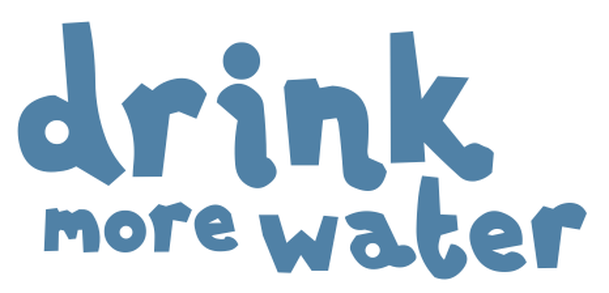
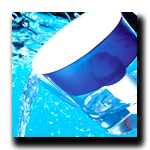



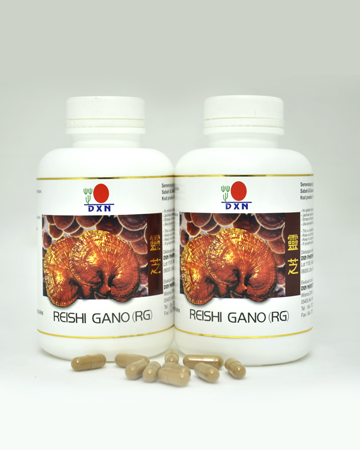

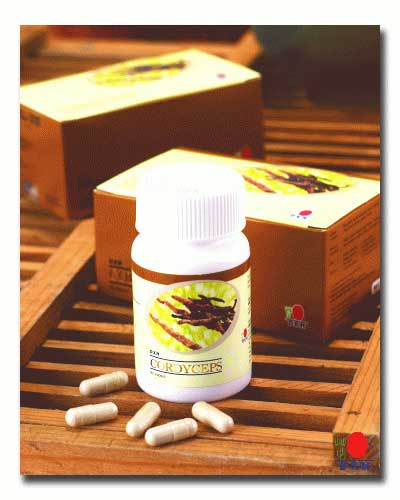



 RSS Feed
RSS Feed